The Ghasabe Qanats: The Oldest Qanats in the World
The Ghasabe Qanats, an ancient marvel of engineering, channel life-giving water through intricate underground tunnels, highlighting Iran's ingenious water management heritage.
Iran is home to thousands of qanats, ingenious ancient water systems still used today in many regions. Among these, the Ghasabe Qanats, also known as the Qasabeh Qanat of Gonabad, stand out as the oldest and deepest qanat system in the world.
Recognized as a UNESCO World Heritage site, they hold a prominent place in Iranian civilization alongside other notable qanats like Zarch, Gowhariz Jopar, and Baladeh Ferdows.
Located in Gonabad, this intricate network of underground canals symbolizes a marvel of human engineering, constructed to bring life-giving water to an arid region.
The Ghasabe Qanats are so old and mysterious that they’re shrouded in legends—some say supernatural beings built them, while others believe they’re haunted by spirits of lost diggers.
This blog will explore everything you need to know about the Ghasabe Qanats, including their history, legends, and architecture.
About the Ghasabe Qanats
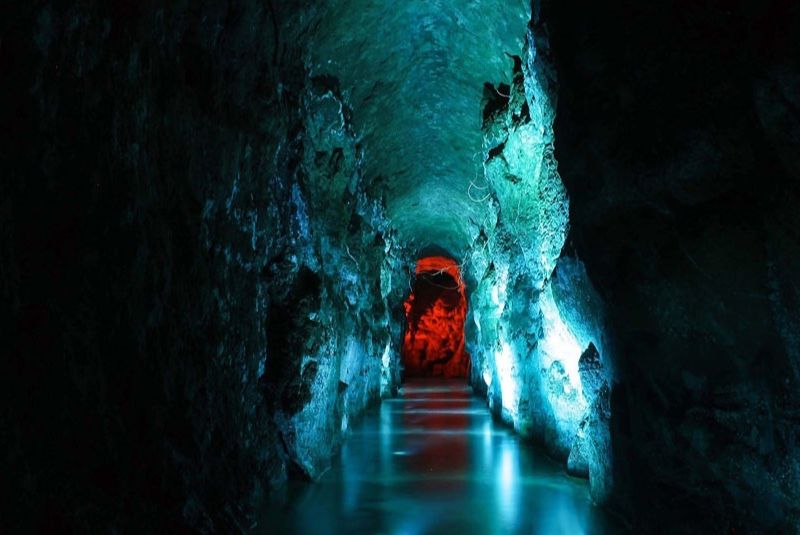
The Ghasabe Qanat (Qasabeh Qanat) in Gonabad is one of Iran's most remarkable human-made wonders and a testament to ancient harmony with nature. Known as the oldest qanat in the world, its origins date back 2,500 to 2,700 years.
In 2000, it was officially registered by Iran's Cultural Heritage Organization as a national monument (registration number 2963). Today, this historical marvel is also a UNESCO World Heritage site, attracting visitors with its incredible engineering and rich history.
Wonders of the Ghasabe Qanats
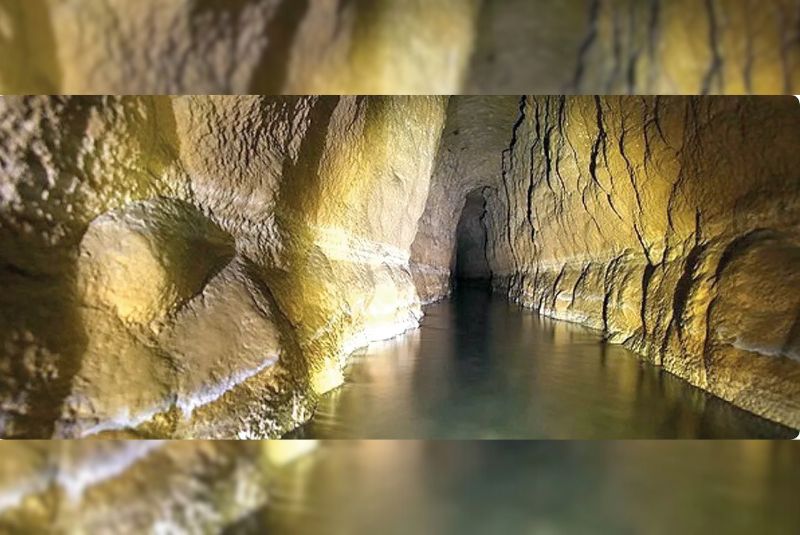
The qanats of Gonabad are divided into mountainous and plain types. Mountain qanats are typically dug through steep valleys and are fed by rainfall and snowmelt, providing a water flow rate of 1 to 25 liters per second. These qanats stretch between 50 to 500 meters, with mother wells around 3 to 20 meters deep.
Plain qanats, on the other hand, must traverse great distances across flat land to reach underground water tables, making them awe-inspiring achievements of human ingenuity. The Ghasabe Qanat stands as the largest qanat in Gonabad and is considered one of the most remarkable examples of ancient Iranian engineering.
Spanning 33 kilometers, the Ghasabe Qanat consists of two main branches, Qasabeh and Doulab, connected by 427 wells. Its mother well reaches an astonishing depth of 340 meters, with over 73 million cubic meters of soil excavated during its construction, all with remarkable precision in slope and direction—a testament to its creators’ skill.
The Ghasabe Qanat remains one of Iran’s most water-abundant qanats, with a steady discharge of around 150 liters per second year-round. Historically, it supplied water for agriculture up to 34 kilometers north of its source, supporting vast areas of Gonabad's farmlands. This qanat endures as a marvel of historical water management and engineering.
| Also read about: Shushtar Hydraulic System - An Ancient Engineering Wonder
History of the Ghasabe Qanats

The Ghasabe Qanat has a history that stretches over 2,500 to 2,700 years, offering a wealth of insights. Fragments of pottery found near one of its wells suggest that the Qasabeh branch was the first and most important canal of this qanat, likely built during the Achaemenid era, around 500 BCE.
The first detailed description of the Gonabad Qanat came from the Persian traveler Nasir Khusraw Qubadiani. In 444 AH, while traveling from Tun to Gonabad, he wrote about an incident where travelers were attacked by bandits, and some were thrown into a qanat shaft.
After an extensive rescue operation, they retrieved the body of one man, who described the vast water flowing through the qanat, which he said stretched over four farsangs (about 16 kilometers). He also mentioned that it was believed to have been created by King Khosrow.
Later, the historian Hamdallah Mostofi, in 740 AH, referenced Nasir Khusraw's account, noting that the qanat was four farsangs long and had wells measuring approximately 700 yards deep. He also described the direction of the water flow from south to north.
Legends of the Ghasabe Qanats
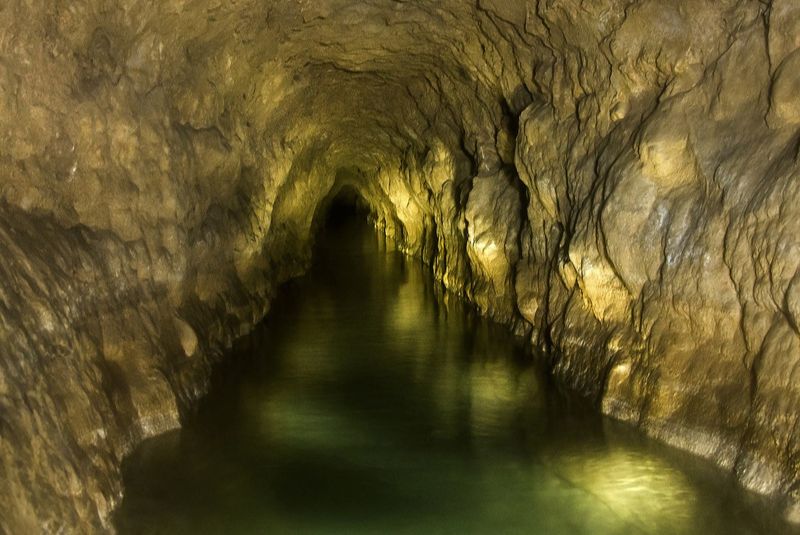
The legends and stories surrounding the Ghasabe Qanats are both fascinating and mysterious. Gonabad, the city where the qanat is located, has been referred to by various names throughout history, such as "Kenabad," "Yanabad," "Jinabad," "Goudaraz," and "Gio." The name "Gonabad" itself is believed to be derived from two parts: "Gon," meaning "demon," and "Abad," meaning "settled" or "prosperous."
Locals believe that a qanat of such enormous scale and depth could not have been constructed by humans alone. According to one legend, when the people of the region needed water, a man named Taher Ab-Shenas commanded the demons to dig an underground canal.
Another popular belief is that the original name of the city was "Jinabad," which gradually evolved into "Jenabad" and eventually "Gonabad." Some older residents claim that the city was once called "Gonabad," with "Gon" meaning "sun" in Turkish, while others believe it refers to the "Gon plant," abundant in the area.
Additionally, there are tales that footprints have been found at the bottom of the qanat, suggesting that the qanat may have been dug by workers of extraordinary height.
| Suggestion: Iranian Windmills - Ancient Windmills in Iran
Architecture of the Ghasabe Qanats
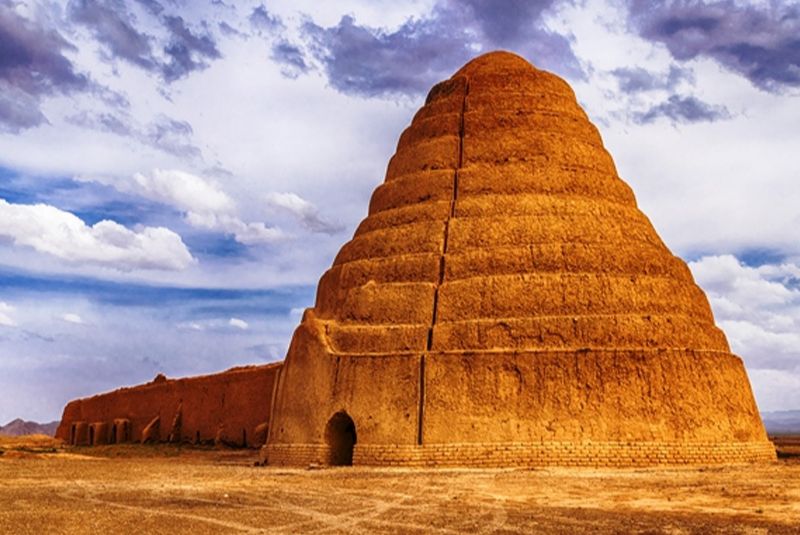
The architecture of the Gonabad Qanat is so unique and impressive that it has captured global attention. The qanat stretches over 33 kilometers in length and reaches a depth of 300 meters, featuring two main branches known as Qasabeh and Dolab. In total, the qanat consists of 472 well shafts.
What astonishes many is how ancient people, without modern tools, were able to create such a magnificent and flawless structure. This qanat, dating back between 2,500 and 2,700 years, stands as a symbol of the civilization and ingenuity of the Iranians during that era.
Ghasabe Qanats Different Sections
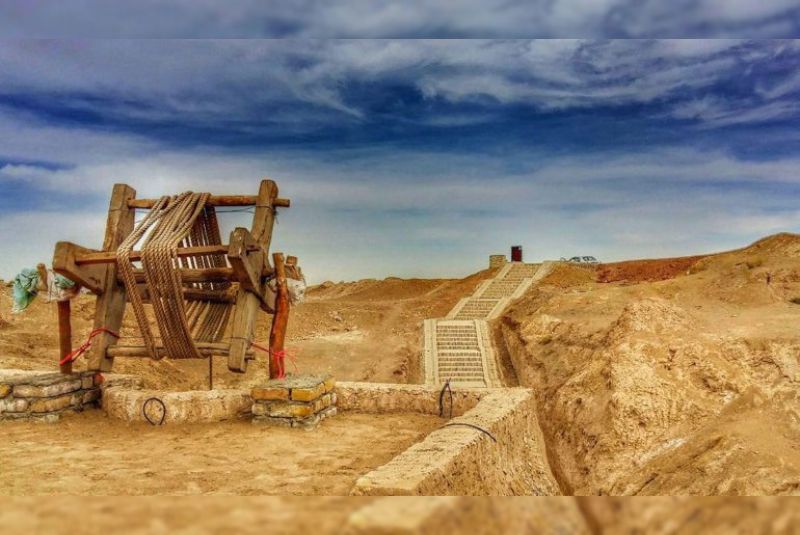
The Ghasabe Qanat consists of several sections that work together to channel water from underground sources to the surface. These sections include the following:
The Outlet of the Ghasabe Qanat
The outlet of the Ghasabe Qanat, known locally as Sar-e-Kariz or Dehaneh Fareh, is where water emerges from the qanat. Over the years, this section has changed multiple times due to varying water levels. About 1,000 years ago, the water flow was so abundant that it extended beyond the city of Gonabad.
The water was directed through a step-like system towards distant reservoirs. Today, the outlet is located in the southeast of Gonabad, about 1,100 meters above sea level.
Payab
The Payab or Pi Ab is a structure built to allow easier access to the qanat’s water. This entrance, often with steps, leads to the underground channels where the water flows.
There are two types of Payab: public for general access and private for individual homes. In Gonabad, Payabs are absent in the city's neighborhoods due to the qanat’s location outside the city limits.
The Mother Well
The Mother Well refers to the deepest well in any qanat branch, located farthest from the main entrance. In the case of Ghasabe Qanat, this well is significant as the qanat has faced water leakage problems as it approaches the final sections.
The initial well, or Gamanah, is dug to assess water flow. If it reaches the water table, it is considered the mother well; otherwise, the digger continues to excavate further.
Main Entrance
The main entrance to the Ghasabe Qanat, also called the Ghal-e-Shagal, is reinforced with concrete and is located 720 meters from the qanat. This entrance has a height of 170 cm and a width of 80 cm.
The entrance area is made of loose soil, and over time, parts of the passageway have eroded. This section, which is part of the tereh-kar (water-bearing section), is protected by dense conglomerate layers, preventing further deterioration.
Secondary Entrances
The Ghasabe Qanat has multiple entrances. The second entrance remains largely unchanged and is accessible via a steep, narrow set of metal steps leading underground. This entrance is recommended for visitors because it is drier and well-preserved.
Currently, 500 meters of the qanat are open for public viewing, with efforts underway to open more sections. The third entrance is located between the second and the cemented section, where the water passes through an artificial tunnel at a depth of 300 meters.
The construction of the Ghasabe Qanat began in the Achaemenid period, with later branches added in subsequent centuries. The qanat continues to serve as a remarkable testament to ancient engineering and Persian ingenuity.
| Discover: Iran Windcatchers
Best Time to Visit the Ghasabe Qanats
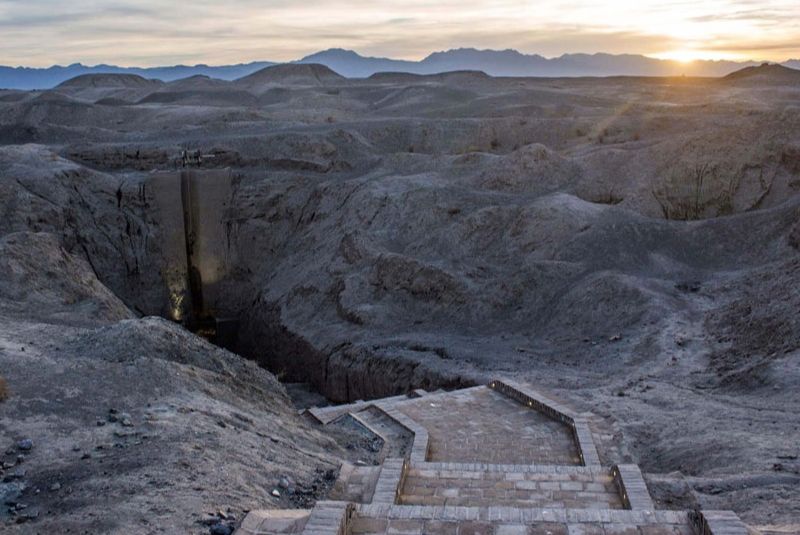
Gonabad is a dry, semi-desert region on the edge of Iran’s central desert. The area experiences hot summers, cold winters, and significant temperature fluctuations between day and night. The best season to visit Gonabad and explore the Ghasabe Qanats is during the spring, when the weather is more moderate and pleasant for sightseeing.
Visiting Conditions for the Ghasabe Qanats
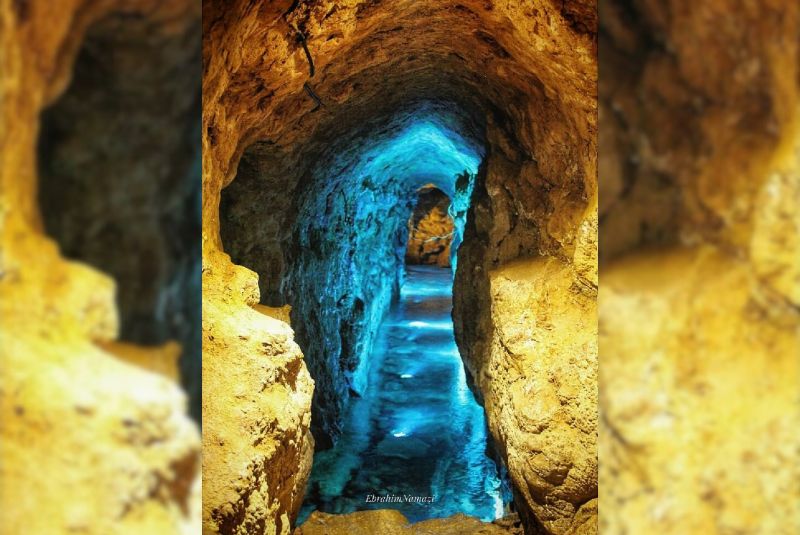
The Ghasabe Qanat is a prime tourist attraction in Razavi Khorasan Province, drawing many visitors each year. Currently, the first 500 meters are open to visitors, though the remaining paths require reinforcement and additional facilities. About 60% of the qanat's wells are blocked, with only 40% actively supplying water at a rate of 150 liters per second.
Ticket Price
For Iranian visitors, the entrance fee is 20,000 tomans, while international tourists pay 200,000 tomans. The fee includes access to a tour guide.
Opening Hours
The qanat is open daily from 8:00 AM to 1:00 PM. If the gates are closed, visitors can contact the qanat guide. Plan for one to two hours to explore the site fully.
Accommodation During Your Visit to the Ghasabe Qanats
Fortunately, accommodation is not an issue when visiting the Ghasabe Qanats in Gonabad. The city's hotels are well-equipped to host travelers, offering comfortable stays.
Additionally, the eco-lodges in Gonabad and its surroundings provide a unique and charming option for an enjoyable stay alongside your exciting journey. Some of these eco-lodges include:
- Qavamiyeh Riab Eco-Lodge (Alipour House)
- Ivān Mansion Eco-Lodge
- Golestan Adib Eco-Lodge
- Darb Sangi Eco-Lodge
- Ghor Qojd Eco-Lodge
Ghasabe Qanats Location and Access
The Ghasabe Qanat lies on the southern outskirts of Gonabad, about 295 kilometers south of Mashhad.
How to Get There
To reach the Qanats of Ghasabeh, take the Hamzeh Square exit in Gonabad, continue along Molla Mozaffar Boulevard, and then follow a side path near the Agha Seyed Hassan cemetery to access the qanat entrance, or continue toward the Imam Reza district until you reach Qanat Street, leading to the parking area.
Upon arriving and purchasing tickets, visitors can follow a short trail to the qanat’s main entrances. The first entrance, known as "Ghal-e Shoghal," has a shallow path descending into the qanat, while the second entrance, farther away, provides access through a narrow, long metal staircase that leads deep into the ancient aqueduct system.
Tourist Attractions Nearby
1. Gonabad Jameh Mosque
The Gonabad Jameh Mosque dates back to the Khwarezmian period and features a two-porch layout with several key components, including a decorative entrance, a central courtyard, northern and southern porches, a portico, and three columned prayer halls.

The main porch, located in the southern part of the mosque, includes a mihrab adorned with geometric and floral motifs, along with calligraphic inscriptions in a cursive script. The eastern part of the mosque holds the Quran hall, which is supported by four columns. Gonabad Jameh Mosque is registered as a national heritage site and remains one of the city's prominent attractions.
2. Riyab Village
Riyab Village, situated 6 kilometers west of Gonabad, is a well-known tourist destination and lies close to the Ghasabe Qanats. The village, with its hot and dry climate due to its proximity to the Iranian desert, primarily relies on water from the qanat for agricultural needs.
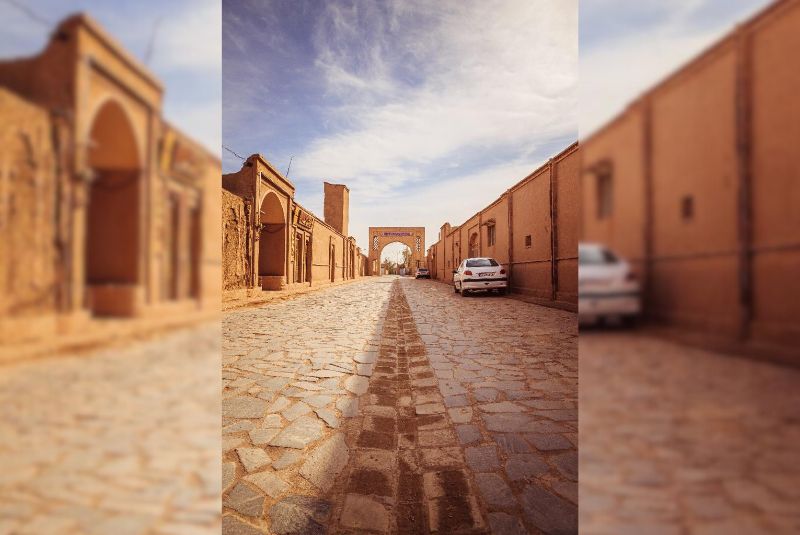
Riyab, with a history of over a thousand years, is one of the oldest mudbrick villages in Iran. It was registered as a national heritage site in 2008. Notable attractions in Riyab include the village's ancient castles and the Naserian House.
Bottom Line
The Ghasabe Qanats, located in Gonabad, Iran, are the oldest and deepest qanat system in the world, stretching over 33 kilometers. Recognized as a UNESCO World Heritage site, they date back 2,500 to 2,700 years. This ancient water system is an engineering marvel, with a depth of 340 meters and a discharge rate of 150 liters per second.
Serving as a lifeline for agriculture, these qanats continue to supply water to Gonabad's farmlands. Visitors can explore its underground canals, marveling at the ingenuity of its construction and the rich history and legends surrounding its creation.
Share your story!
Comment below and let us know about your Experience.
Your story inspires others!


Comment
Leave a Comment